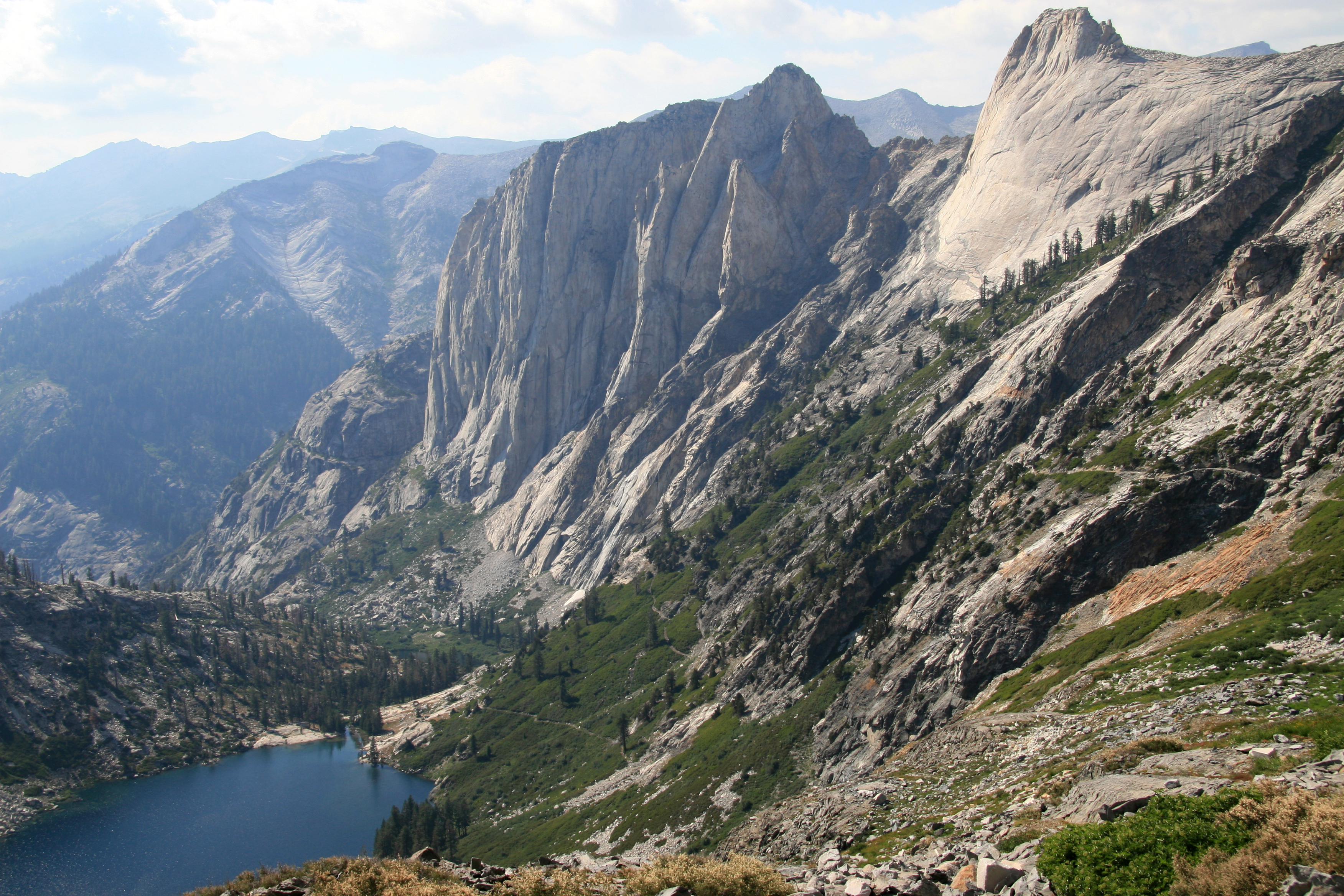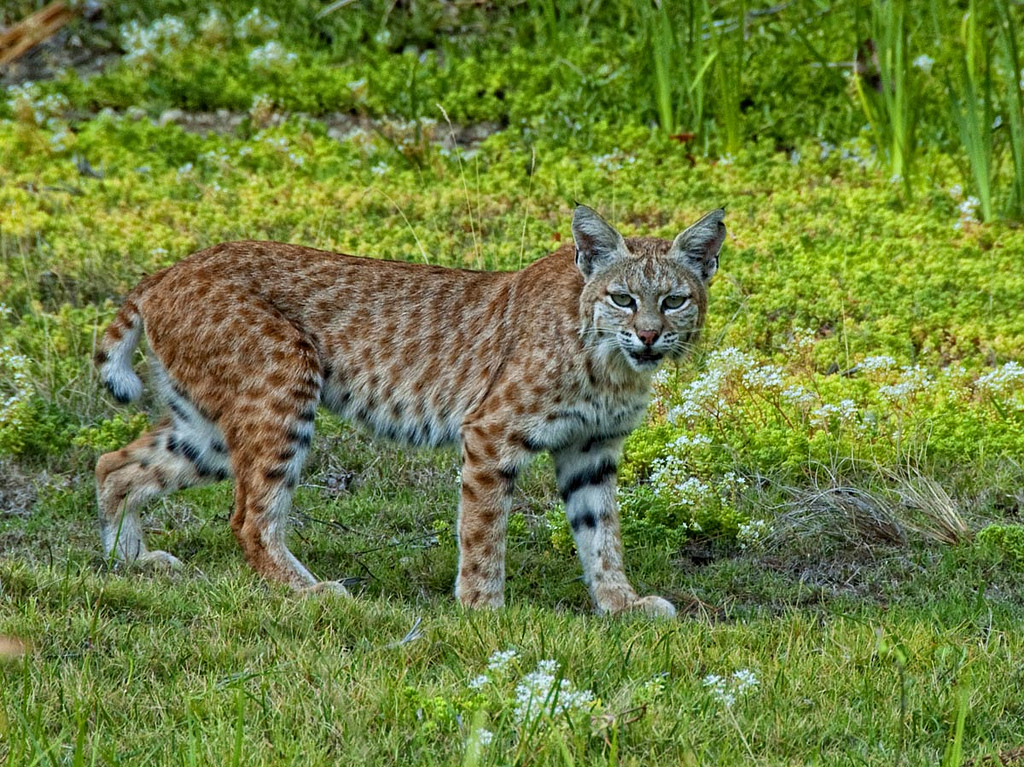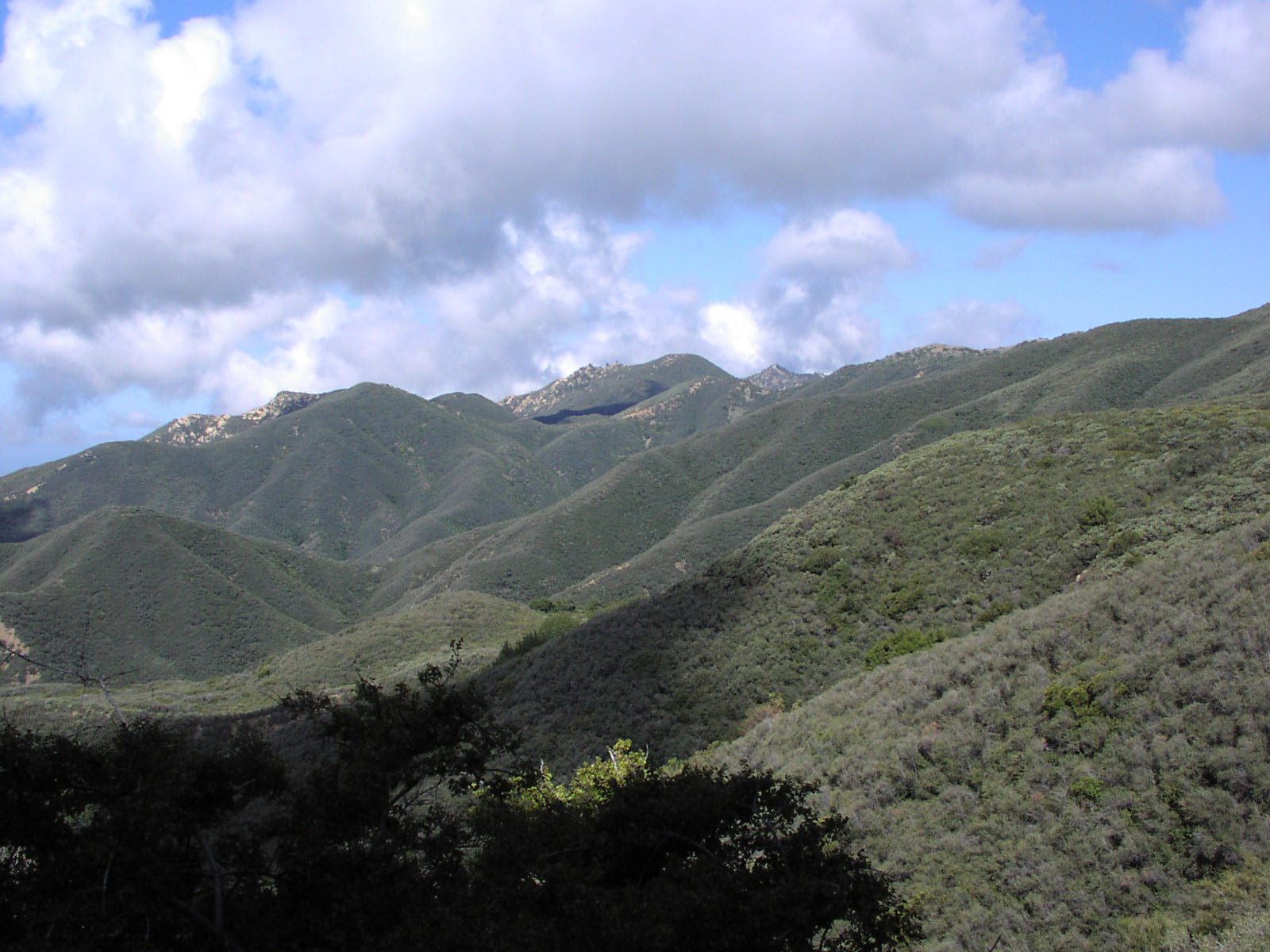|
Sequoia National Park
Sequoia National Park is a List of national parks of the United States, national park of the United States in the southern Sierra Nevada (U.S.), Sierra Nevada east of Visalia, California. The park was established on September 25, 1890, and today protects of forested mountainous terrain. Encompassing a vertical relief of nearly , the park contains the highest point in the contiguous United States, Mount Whitney, at above sea level. The park is south of, and contiguous with, Kings Canyon National Park; both parks are administered by the National Park Service together as Sequoia and Kings Canyon National Parks. UNESCO designated the areas as Sequoia-Kings Canyon Man and the Biosphere Programme, Biosphere Reserve in 1976. The park is notable for its Sequoiadendron giganteum, giant sequoia trees, including the General Sherman Tree, the List of largest giant sequoias, largest tree on Earth by volume. The General Sherman Tree grows in the Giant Forest, which contains five of the ten ... [...More Info...] [...Related Items...] OR: [Wikipedia] [Google] [Baidu] |
Sequoiadendron Giganteum
''Sequoiadendron giganteum'' (also known as the giant sequoia, giant redwood, Sierra redwood or Wellingtonia) is a species of coniferous tree, classified in the family Cupressaceae in the subfamily Sequoioideae. Giant sequoia specimens are the largest trees on Earth. They are native to the groves on the western slopes of the Sierra Nevada (U.S.), Sierra Nevada mountain range of California but have been introduced, planted, and grown around the world. The giant sequoia is listed as an endangered species by the International Union for Conservation of Nature, IUCN with fewer than 80,000 remaining in its native California. The tree was introduced to the U.K. in 1853, and by now might have 500,000 trees growing there where it is more commonly known as Wellingtonia after the Duke of Wellington. The giant sequoia grow to an average height of 50–85 m (164–279 ft) with trunk diameters ranging from 6–8 m (20–26 ft). Record trees have been measured at 94.8 m (311&nbs ... [...More Info...] [...Related Items...] OR: [Wikipedia] [Google] [Baidu] |
General Sherman Tree
The General Sherman Tree is a giant sequoia (''Sequoiadendron giganteum'') tree in the Giant Forest of Sequoia National Park in Tulare County, California. By volume, it is the largest known living single-stem tree on Earth. History The General Sherman Tree was named after the American Civil War general William Tecumseh Sherman. The official story, which may be apocryphal, claims the tree was named in 1879 by naturalist James Wolverton, who had served as a lieutenant in the 9th Indiana Cavalry under Sherman. Seven years later, in 1886, the land came under the control of the Kaweah Colony, a utopian socialist community whose economy was based on logging. Noting the pivotal role that Sherman had played in the Indian Wars and his forced relocation of native American tribes, they renamed the tree in honor of Karl Marx. However, the community was disbanded in 1892, primarily as a result of the establishment of Sequoia National Park, and the tree reverted to its previous name. In ... [...More Info...] [...Related Items...] OR: [Wikipedia] [Google] [Baidu] |
General Grant Grove
General Grant Grove, a section of the greater Kings Canyon National Park, was established by the U.S. Congress in 1890 and is located in Fresno County, California. The primary attraction of General Grant Grove is the giant sequoia trees that populate the grove. General Grant Grove's best-known tree is called General Grant, which is tall and the third-largest known tree in the world. Traditionally, the size of a sequoia has been measured by calculating the volume of the tree's trunk. Using this metric, General Grant is the second-largest known tree in the world, while The President tree is the third-largest. A 2011–12 study of the President found that, if the volume of a tree's branches is taken into account, the President is larger than General Grant. The General Grant tree is over 1,500 years old and is known as the United States' national Christmas tree. General Grant Grove consists of and is geographically isolated from the rest of Kings Canyon National Park. Histo ... [...More Info...] [...Related Items...] OR: [Wikipedia] [Google] [Baidu] |
Rattlesnake
Rattlesnakes are venomous snakes that form the genus, genera ''Crotalus'' and ''Sistrurus'' of the subfamily Crotalinae (the pit vipers). All rattlesnakes are vipers. Rattlesnakes are predators that live in a wide array of habitats, hunting small animals such as birds and rodents. Rattlesnakes receive their name from the #Rattle, rattle located at the end of their tails, which makes a loud rattling noise when tail vibration, vibrated that deters predators. Rattlesnakes are the leading contributor to snakebite injuries in North America, but rarely bite unless provoked or threatened; if treated promptly, the bites are seldom fatal. The 36 known List of rattlesnake species and subspecies, species of rattlesnakes have between 65 and 70 subspecies, all native to the Americas, ranging from central Argentina to southern Canada. The largest rattlesnake, the Eastern diamondback rattlesnake, eastern diamondback, can measure up to in length. Rattlesnakes are preyed upon by hawks, wease ... [...More Info...] [...Related Items...] OR: [Wikipedia] [Google] [Baidu] |
Ground Squirrel
Ground squirrels are rodents of the squirrel family (Sciuridae) that generally live on the ground or in burrows, rather than in trees like the tree squirrels. The term is most often used for the medium-sized ground squirrels, as the larger ones are more commonly known as marmots (genus ''Marmota'') or prairie dogs, while the smaller and less bushy-tailed ground squirrels tend to be known as chipmunks (genus ''Tamias''). Together, they make up the "marmot Tribe (biology), tribe" of squirrels, Marmotini, a clade within the large and mainly ground squirrel subfamily Xerinae, and containing six living genera. Well-known members of this largely Holarctic group are the marmots (''Marmota''), including the American groundhog, the chipmunks, the susliks (''Spermophilus''), and the prairie dogs (''Cynomys''). They are highly variable in size and Morphology (biology), habitus, but most are remarkably able to rise up on their hind legs and upright posture, stand fully erect comfortably for pr ... [...More Info...] [...Related Items...] OR: [Wikipedia] [Google] [Baidu] |
Bobcat
The bobcat (''Lynx rufus''), also known as the wildcat, bay lynx, or red lynx, is one of the four extant species within the medium-sized wild cat genus '' Lynx''. Native to North America, it ranges from southern Canada through most of the contiguous United States to Oaxaca in Mexico. It is listed as Least Concern on the IUCN Red List since 2002, due to its wide distribution and large population. Although it has been hunted extensively both for sport and fur, populations have proven stable, though declining in some areas. It has distinctive black bars on its forelegs and a black-tipped, stubby (or "bobbed") tail, from which it derives its name. It reaches a total length (including the tail) of up to . It is an adaptable predator inhabiting wooded areas, semidesert, urban edge, forest edge, and swampland environments. It remains in some of its original range, but populations are vulnerable to extirpation by coyotes and domestic animals. Though the bobcat prefers rabbits and ... [...More Info...] [...Related Items...] OR: [Wikipedia] [Google] [Baidu] |
Yucca
''Yucca'' ( , YUCK-uh) is both the scientific name and common name for a genus native to North America from Panama to southern Canada. It contains 50 accepted species. In addition to yucca, they are also known as Adam's needle or Spanish-bayonet. The genus is generally classified in the asparagus family in Agavoideae, a subfamily with the ''Agave'', though historically it was part of the lily family. The species range from small shrubby plants to tree-like giants, such as the Joshua tree. All yuccas have Rosette (botany), rosettes of leaves that taper to points and inflorescences with many flowers that are mainly cream white with thick petals. Though adapted to a wide range of climates the plants are xerophytes, ones that specialize in dry living conditions. The tight relationship between the yucca plants and their pollinators, the yucca moths from the genera ''Tegeticula'' and ''Parategeticula'', is a well known example of evolutionary Mutualism (biology), mutualism. They are ... [...More Info...] [...Related Items...] OR: [Wikipedia] [Google] [Baidu] |
Chaparral
Chaparral ( ) is a shrubland plant plant community, community found primarily in California, southern Oregon, and northern Baja California. It is shaped by a Mediterranean climate (mild wet winters and hot dry summers) and infrequent, high-intensity crown fires. Many chaparral shrubs have hard sclerophyllous evergreen leaves, as contrasted with the associated soft-leaved, drought-deciduous, scrub community of coastal sage scrub, found often on drier, southern-facing slopes. Three other closely related chaparral shrubland systems occur in southern Arizona, western Texas, and along the eastern side of central Mexico's mountain chains, all having summer rains in contrast to the Mediterranean climate of other chaparral formations. Etymology The name comes from the Spanish language, Spanish word , which translates to "place of the scrub oak". ''Scrub oak'' in turn comes from the Basque language, Basque word , which has the same meaning. Overview In its natural state, chaparral is ... [...More Info...] [...Related Items...] OR: [Wikipedia] [Google] [Baidu] |
Blue Oak
''Quercus douglasii'', known as blue oak, is a species of oak endemic to California, common in the Coast Ranges and the foothills of the Sierra Nevada. It is California's most drought-tolerant deciduous oak, and is a dominant species in the blue oak woodland ecosystem. It is occasionally known as mountain oak and iron oak. Description ''Quercus douglasii'' is a medium-sized tree with sparse foliage, generally tall, with a trunk in diameter at breast height. Trunks are typically solitary, but some trees have multiple trunks. The tallest recorded specimen was found in Alameda County, at . The trees grow slowly, about per year. Individual trees over 500 years old have been recorded. The bark is light gray with many medium-sized dark cracks. The blue-green leaves are tough and leathery, deciduous, long, and entire or shallowly lobed. The acorns are long, with a moderately sweet kernel, and mature in 6–7 months from pollination. ''Q. douglasii'' is monoecious and wind-pol ... [...More Info...] [...Related Items...] OR: [Wikipedia] [Google] [Baidu] |
Ash Mountain Entrance Sign
The Ash Mountain Entrance Sign at Sequoia National Park was constructed in 1935 by Civilian Conservation Corps craftsmen. Featuring a carved Native American face, the sign was made from blocks of sequoia wood and fastened with wrought iron brackets. The design was first proposed by National Park Service architect Merel S. Sager in 1931, who designed a small log sign for the Ash Mountain entrance. In 1935 resident park landscape architect Harold G. Fowler created a much larger design. He recruited CCC worker George W. Muno, who had displayed a talent for woodworking, and they selected a piece of fallen sequoia wood from the Giant Forest. Fowler sketched the profile in blue chalk on the wood using an Indian Head nickel as a guide. Muno carved the wood over several months and the sign was assembled and erected over the winter of 1935–36. It was moved in 1964 to make room for a new park entrance station. The sign is supported by a sequoia log rising from a two-tiered masonry ... [...More Info...] [...Related Items...] OR: [Wikipedia] [Google] [Baidu] |
Three Rivers, California
Three Rivers is an Unincorporated area#United States, unincorporated community and census-designated place (CDP) in Tulare County, California, United States. Located in the foothills of the Sierra Nevada at the edge of the San Joaquin Valley, the town is near the entrance to the list of national parks of the United States, national parks of Sequoia National Park, Sequoia and Kings Canyon National Park, Kings Canyon. The town's name comes from its location near the junction of the North, Middle, and South Forks of the Kaweah River. The population was 2,053 at the 2020 United States census, 2020 census, down from 2,182 at the 2010 United States Census, 2010 census. The census definition of the area may not precisely correspond to local understanding of the area with the same name. The two national parks, which border the town to the northeast, are the prime attraction of Three Rivers. Geography Three Rivers is located in the Kaweah River canyon, just above Lake Kaweah. Surroundin ... [...More Info...] [...Related Items...] OR: [Wikipedia] [Google] [Baidu] |
Euro-American Culture
The culture of the United States encompasses various social behaviors, institutions, and Social norm, norms, including forms of Languages of the United States, speech, American literature, literature, Music of the United States, music, Visual art of the United States, visual arts, Theater in the United States, performing arts, American cuisine, food, Sports in the United States, sports, Religion in the United States, religion, Law of the United States, law, Science and technology in the United States, technology, as well as other customs, beliefs, and forms of knowledge. American culture has been shaped by the history of the United States, Geography of the United States, its geography, and various internal and external forces and History of immigration to the United States, migrations. America's foundations were initially Western culture, Western-based, and primarily Culture of England, English-influenced, but also with prominent Culture of France, French, Culture of Germany, Ge ... [...More Info...] [...Related Items...] OR: [Wikipedia] [Google] [Baidu] |












